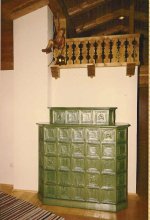ultrarunner
Epic Contributor
- Joined
- Apr 6, 2004
- Messages
- 28,628
- Tractor
- Cat D3, Deere 110 TLB, Kubota BX23 and L3800 and RTV900 with restored 1948 Deere M, 1949 Farmall Cub, 1953 Ford Jubliee and 1957 Ford 740 Row Crop, Craftsman Mower, Deere 350C Dozer 50 assorted vehicles from 1905 to 2006
It's not a "no-no". The code requires specific fire safe vents that prevent embers from entering. We just went through this on our house which is in a fire prone area of California. We added ridge vents this summer while we were doing the roof... in fact the roof inspector said we had to have vents (they were planned anyhow).
Since you're in the city you may not be worried, but if I had older non fire safe vents I'd be replacing them with fire safe ones. A lot of recent research has shown that in wildfires many houses burn from the inside out because embers got in.
I'm eagerly following the venting discussion as I'm planning a shop. Humidity is a problem in the winter but as mentioned I also have wild fire safety to worry about.
The inspector was adamant the eve vents had to go and solid 2x blocking in it's place... the builder, owner and architect were unable to sway and I happened to be there as it went down...
Beautiful home on several city acres with tile roof and lead flashing...
2013 was the sign off date... maybe things have changed?
I had zero issues with my re-roof from shake to Presidential which required new sheathing... doubled the number of eve vents and installed ridge vents... Pulled a permit and the inspector did a drive-by... rolled down the window and said looks like a nice job and smart getting rid of the shake...

